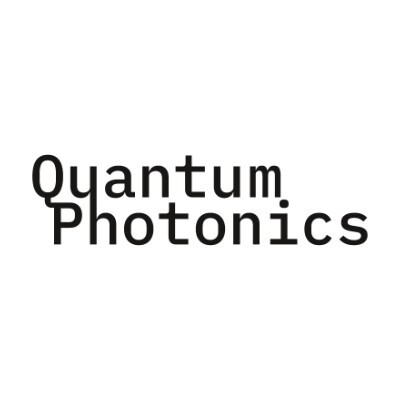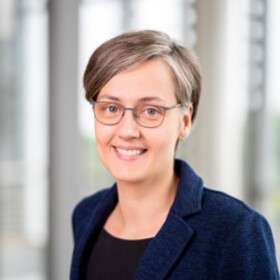Quantum for the mobility of tomorrow - Road, rail and air traffic benefit from quantum technology
Secure vehicle communication, quantum computing for mobility or improved composite materials: The benefits of quantum technology in the context of mobility will be demonstrated at the user conference and accompanying trade exhibition Quantum Photonics.
Communication is increasing, and this also applies to road, rail and air traffic: in future, cars, for example, will inform drivers about the condition of roads and the traffic situation and warn them of cyclists or pedestrians approaching. This is known as connectivity. It increases the safety and comfort of driving for all road users. Data is exchanged via the Internet, but electronic structures are likely to become increasingly unsafe. After all, networked vehicles on the road, rail and in the air are potential targets for targeted disruptions.
More security for connectivity
Quantum technology can be used to drastically increase the security of connectivity. Encryption and isolation mechanisms in particular provide interesting opportunities to better protect communication. In quantum key distribution, for example, vehicles communicating with each other receive a common random number that serves as a secret key for the exchange of information. Quantum technologies not only have a lot to offer in the development of secure communication systems, but also in vehicle optimization, materials research and, in the future, perhaps even quantum computers embedded in vehicles.
Experts will be discussing the many benefits of quantum technology for mobility at the Quantum Photonics congress trade fair on May 13 and 14, 2025 in Erfurt. “At the user conference, we will address the application field of secure quantum communication and quantum sensor technology for mobility and present innovative approaches, projects, companies and institutes,” says Anke Siegmeier, Managing Director of OptoNet Jena and forum manager for the ‘Quantum and Mobility’ section of Quantum Photonics. “In a concentrated session, we will allow experts in quantum technologies and mobility to have their say and facilitate a targeted discussion.”
Speakers cover a wide range of topics
Prof. Dr. Andreas Polze from the Hasso Plattner Institute will present the SQuIRRL project, in which quantum technologies for secure key exchange in road, rail and air traffic are being developed. How can cost-efficient, scalable and robust detection units for entanglement-based quantum key distribution systems be created? How can a generic architecture be designed to integrate the endpoints of these systems in rail, road and air vehicles and the corresponding infrastructure? And which multi-stage processes can be used to demonstrate technical feasibility? Prof. Polze will address all of these questions in his presentation.
Dr. Bernd Burchard, Vice President IP Management at Elmos Semiconductor SE, will give an overview of emerging quantum technologies - from quantum random number generators to mobile quantum computers in vehicles. He will focus in particular on their potential to revolutionize sensor technology as well as safety and data processing in the automotive industry.
Dr. Mario Bähr, development engineer at the Forschungsinstitut für Mikrosensorik GmbH CiS, will discuss how color centers in diamonds can be used for sensor technology and quantum computing in the field of mobility. After all, the color centers enable quantum computing at room temperature as well as quantum metrology. In his presentation, Bähr will provide an insight into the current state of development of the corresponding magnetometry and quantum processor chips and explain the requirements and challenges of these technologies.
Another interesting field of application for quantum technologies in the context of mobility is the use of quantum computers for the design of composite materials. Arne Wulff from Delft University of Technology explains the opportunities and challenges that this entails. He and his colleagues have developed a novel method that enables the production of better and lighter composite materials - and which is proving to be very competitive on an industrial scale.
Location Thuringia: Great expertise in the field of photonics
It is anything but a coincidence that the Quantum Photonics user conference is being held in Thuringia: After all, this region can look back on a long tradition in the field of optical systems and components and occupies a leading position worldwide with high-performance components, laser technology and sensor technology. “In the vehicle of the future, it is optical technologies and sensor technology in particular that will make the difference - the need for photonics in vehicles is increasing,” Siegmeier is convinced. The leading player in the field of photonics is the Fraunhofer IOF, the start-up Quantum Optics Jena, and the Research Institute for Microsensorics GmbH CiS is also making a decisive contribution to Thuringia's expertise. “With Quantum Photonics, we are establishing a format that makes this expertise visible, brings together experts on site and dares to take a look at the application,” says Siegmeier, ”so that industry and companies can exploit the innovation potential.”
Parallel event rapid.tech 3D
rapid.tech 3D, the leading event for the additive manufacturing industry, will take place alongside Quantum Photonics from May 13 to 15, 2025. As the field of additive manufacturing is used in particular for many optically based quantum technologies, the interlinking of the two congress, forum and networking areas will create synergies for exhibitors and visitors.
An overview of the entire Quantum Photonics congress program and tickets for the congress and exhibition are available online at www.quantum-photonics.de.


